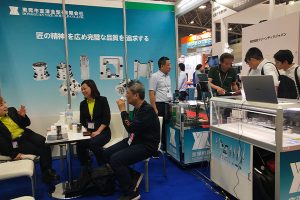Product Characteristics and Manufacturing Processes of Tungsten Carbide Bushings
Product Characteristics Tungsten carbide bushings are characterized by a precision of up to 0.002mm and a wide variety, with the ability to customize non-standard products according to customer needs. Depending […]
Product Characteristics
Tungsten carbide bushings are characterized by a precision of up to 0.002mm and a wide variety, with the ability to customize non-standard products according to customer needs. Depending on the stamping material and thickness, different impact-resistant and wear-resistant materials are employed. Both concentricity and work surface tolerances can be controlled within 2 micrometers, while maintaining a mirror-like finish and other treatments. This ensures that customers can obtain high-quality products in a short period of time.
Our factory business: carbide parts, mold parts, medical injection molds, precision injection molds, teflon PFA injection molding, PFA tube fittings. email: [email protected],whatsapp:+8613302615729.

Material Properties
Tungsten carbide bushings with a hardness of 62-64° are made from tungsten-molybdenum series high-speed steel, which is internationally recognized for its toughness. This steel features fine and uniform carbide particles, high toughness, excellent cutting performance, and good thermoplasticity. It has outstanding wear resistance, particularly its ability to resist softening at high temperatures up to 600°C, and maintains good red hardness. After heat treatment and quenching, the hardness can reach 64HRC. Its wear resistance is twice that of high-chromium and high-carbon steel, and its tensile strength is 1.5 times higher. However, the heat treatment process is challenging, and the usage cost is relatively high.
Manufacturing Processes
- Normalizing: Heat the carbide or carbide components to a suitable temperature above the critical point AC3 or ACM, hold for a certain period, and then cool in the air to obtain a pearlitic structure.
- Annealing: Heat the hypoeutectoid steel components to 20-40 degrees above AC3, hold for a period, and then cool in the furnace to below 500 degrees before cooling in the air.
- Solution Heat Treatment: Heat the alloy to a high-temperature single-phase region and hold at a constant temperature to fully dissolve the excess phase into the solid solution, followed by rapid cooling to obtain a supersaturated solid solution.
- Aging: After solution heat treatment or cold plastic deformation, the alloy’s properties change over time when stored at room temperature or slightly above room temperature.
- Solution Treatment: For tungsten carbide bushings, various phases in the alloy are fully dissolved to strengthen the solid solution, improve toughness and corrosion resistance, and eliminate stress and softening, facilitating further processing and shaping.
- Aging Treatment: Tungsten carbide bushings are heated and held at a temperature where the strengthening phase precipitates, allowing the strengthening phase to precipitate and harden, thereby increasing strength.
- Quenching: Austenitize the steel and cool it at an appropriate rate to cause martensitic or other unstable microstructural transformations throughout the cross-section or within a certain range of the workpiece.






